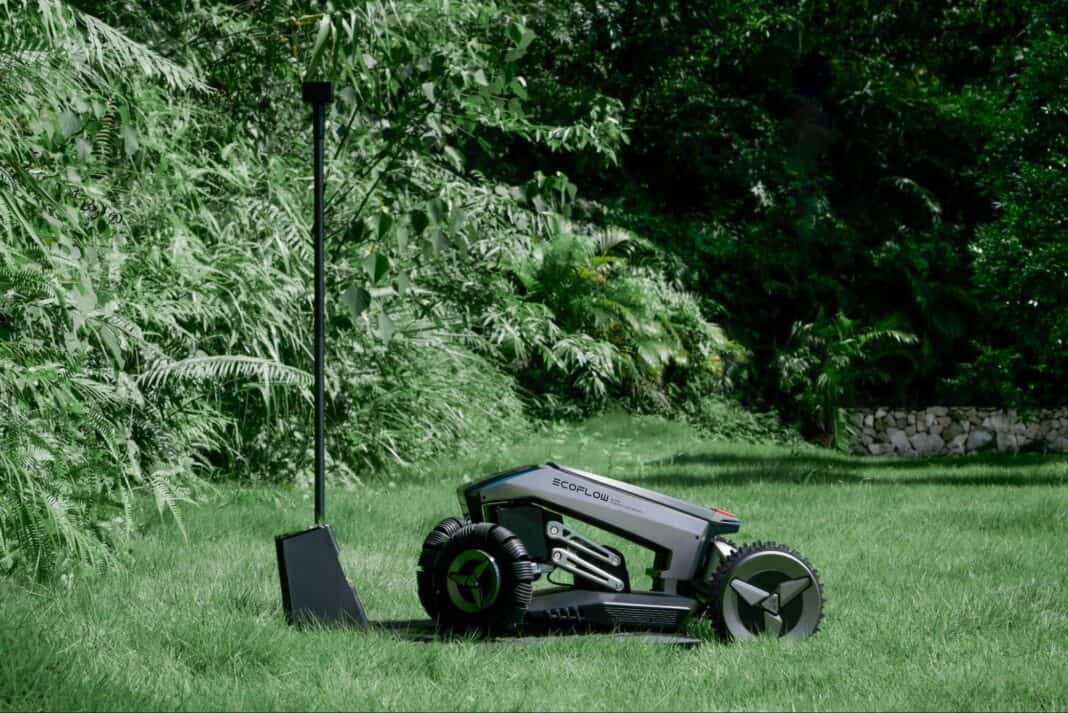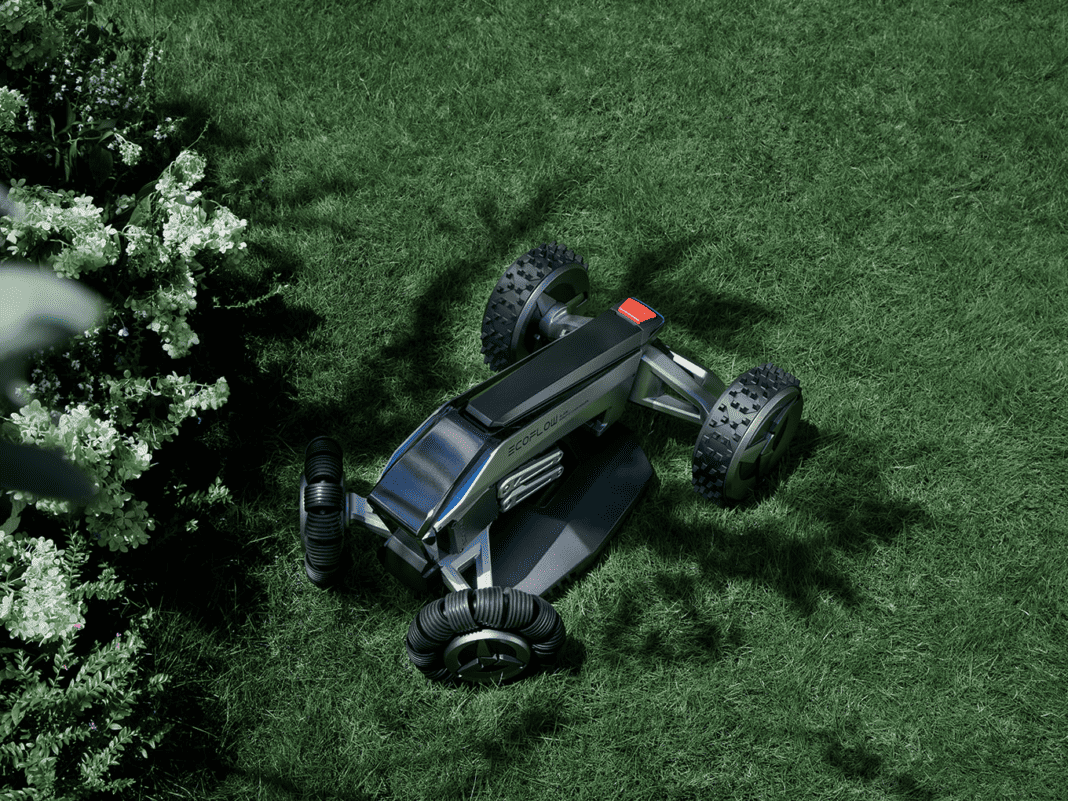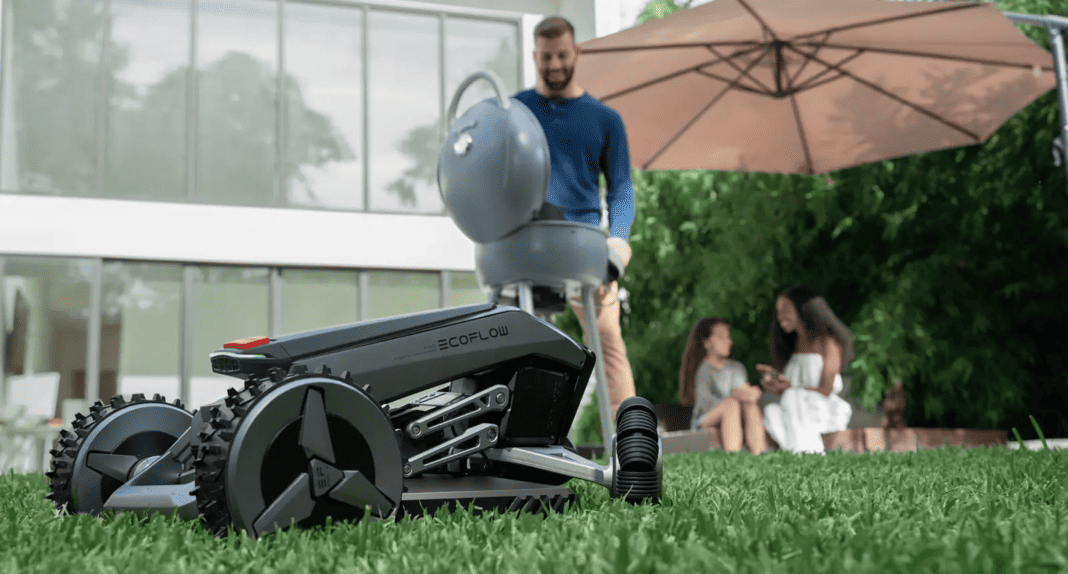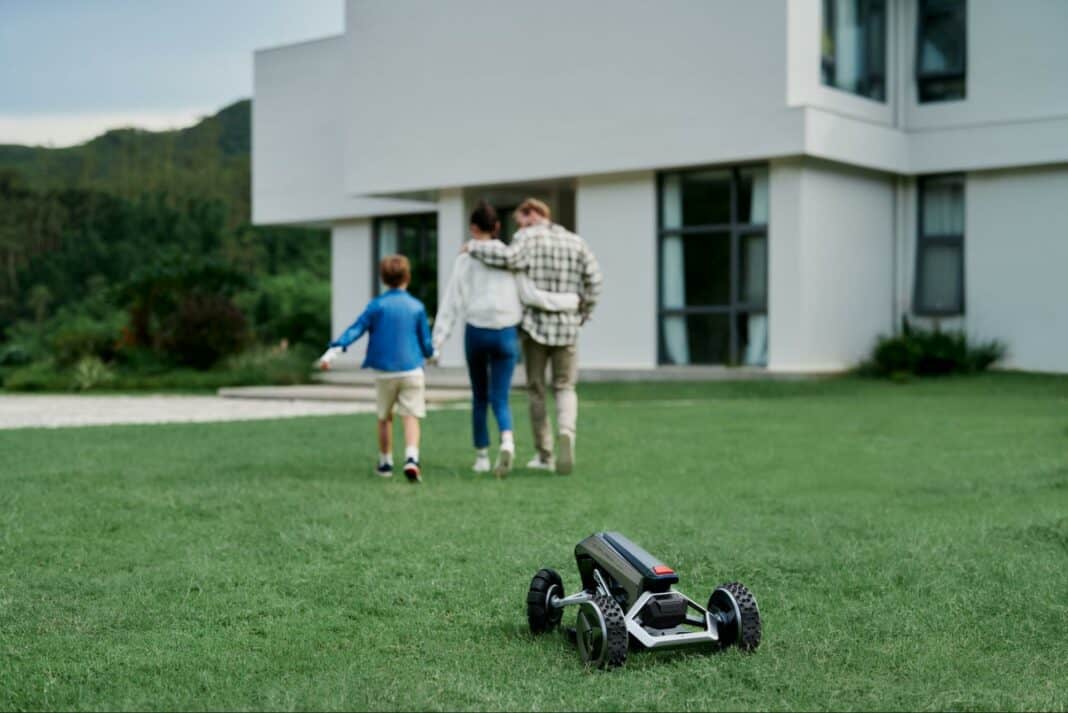Robot lawn mowers have revolutionized how we maintain yards by trimming grass using automated features and advanced sensors. These machines can mow lawns efficiently and precisely for perfectly manicured landscaping.
That said, it requires work to maintain a robotic mower. Maintenance is essential to ensuring that it runs smoothly and lasts for a long time. You’ll need a weekly, monthly, and annual schedule to stay on top of upkeep.
Here, we cover the steps you need to take and offer tips on cleaning it and replacing the blades.
Read on to learn how to keep your robotic lawn mower in tip-top condition.
Importance of Robotic Lawn Mower Maintenance
Maintaining a robot lawn mower is imperative to ensuring your mower operates at peak performance for years. Even a mower like the EcoFlow BLADE Robotic Lawn Mower, built for rugged use and with advanced mowing capabilities, will wear down faster without maintenance, reducing efficiency and lifespan.
Landscaping is costly. Maintaining your automated mower routinely will save you time and money in the long run.
Poorly Maintained Robotic Mowers Work Inefficiently
Purchasing a robotic mower and failing to take good care of it diminishes your return on investment.
Many factors can affect the efficiency of your automated lawn mower, such as:
- Dull blades: Frequent use and operation on hard surfaces or uneven terrain can quickly cause worn blades, leading to inferior cuts and longer mowing times. Dull blades can pluck the grass instead of mowing it, damaging your lawn quality.
- Dirty sensors: Visual sensors detect obstacles and enable the mower to navigate the lawn. If you allow sensors to become significantly covered in debris, they can malfunction and stop working altogether. Soiled sensors may fail to detect boundaries, which can cause the mower to “get lost” and damage landscape features like plants, flowers, or decor.
- Debris stuck in wheels: Soiled wheels can transfer debris onto your lawn, negatively impacting its appearance. Enough dirt and debris can clog up the wheels and lead to decreased efficiency or the mower getting stuck on uneven terrain.
- Dirty or worn charging contacts: Keeping your robotic lawn mower’s battery charging contacts clean ensures optimal and fast charging. If your charger or machine’s contact points become corroded or dirty, it can cause your mower to stop charging or decrease charging efficiency.
- Soiled chassis: When dirt builds up between the mower’s body and its wheels, it can severely slow it down. It’ll consume more power and reduce efficiency.
Lack of maintenance can negatively impact your robotic lawn mowers performance in numerous ways. Keeping your mower clean and well-maintained ensures that you can enjoy the benefits of energy-efficient landscaping.
Poor Maintenance Will Result in Long-term Damage
Short-term performance and efficiency issues are just part of the problem. If left unremedied, some of these factors can cause damage to the device in the long run. You could end up with costly repairs or replacement of your robot mower if your warranty has expired.
Corroded battery contacts can eventually prevent your mower from recharging altogether — rendering it useless without being repaired.
Small objects can get wedged into the mower’s deck if your machine has to work harder, such as mowing through branches or dealing with rocks and pinecones. This can negatively impact the performance of some robotic mowers over the long haul.
Whether it’s clogged in components, dull blades, malfunctioning sensors, corroded battery contacts, or other issues, monitoring your mower’s performance and maintaining it regularly will increase its efficiency — and its lifespan!
Weekly Maintenance
Weekly maintenance helps prevent the buildup of debris. There are two essential areas to focus on: the blades and the wheels.
1. Blades
Clean and monitor the blades for any bluntness or structural damage. It can be difficult to see with the naked eye if edges have worn down — but you’ll notice a difference in performance. Dulled blades can damage your lawn. Unlike traditional mowers, you can’t simply resharpen them. Your robotic mower’s manufacturer should be happy to advise you further.
2. Wheels
Check the tires for any wear or damage. You can use a cloth or brush to clean the wheels and remove accumulated debris.
Monthly Maintenance
Monthly maintenance helps ensure your mower functions properly and detects potential issues before they worsen.
1. Chassis
The chassis is the body or frame of the mower. It houses crucial components like the cutting blades, motor, and battery.
Start by cleaning the chassis to eliminate the dirt and debris. A high-powered air blower can be helpful for this. Then, lubricate visible moving parts, such as the suspension and wheels.
2. Sensors
Wipe the sensors clean of dirt, grass, or obstructions. If you detect any damage, follow the user manual or contact your manufacturer for further guidance.
Here are several tests to perform to check your mower’s sensors.
- Ultrasonic sensors: Place a large (and light) object in front of the mower during operation. See if it tries to avoid it. If it doesn’t, the mower’s sensor may not be functioning correctly.
- Rain sensor: Lightly water the mower with a watering can or garden house to see if it returns to the charging station. If it doesn’t, chances are it’s not operating correctly.
- Lift sensor: Lift the mower off the ground when in use. The mower should switch off; the sensor doesn’t work if not.
- Tilt sensor: Your robot mower unit may be designed to switch off at a particular slope or incline. If that isn’t happening and negatively impacts performance, you should have it checked for repairs.
The EcoFlow BLADE Robotic Lawn Mower uses proprietary X-Vision technology, visual sensors, LiDAR, and Real-Time Kinematic (RTK) positioning to successfully navigate your property and cut grass efficiently. It can intelligently recognize and avoid obstacles. Monthly maintenance ensures all sensors are working optimally.
Annual Maintenance
Some maintenance is only necessary once or twice a year, especially when putting the mower away during winter or taking it out again in the spring.
1. Battery
All batteries have a limited lifespan. Their capacity and efficiency dwindle over time. Replacing the battery is a good idea when the maximum charge capacity dips under 75%.
Battery chemistry is a significant factor in how many cycles (full discharges/recharges) a battery will last before degrading in performance.
Most robotic lawn mowers use lithium-ion batteries — which offer far superior performance to lead acid and nickel-cadmium (Ni-Cad) chemistries. BLADE’s built-in battery is Li-On and provides 240 minutes of cutting between charges — +/- 4,300 sq. ft. (400 ㎡).
Lithium iron phosphate (LiFePO4/LFP) batteries are a newer subset of Li-Ion batteries that offer many advantages, including longer cycle life, faster charging, and a wider range of operating temperatures.
If you want to use the BLADE in locations where AC power isn’t readily available, the optional Smart Extra Battery enables you to take BLADE completely off-grid and recharge using clean, renewable solar energy. With direct solar charging input of 400W, you can connect a 400W portable solar panel and fully recharge in just hours — no other balance of system components required!
The Smart Extra Battery uses LiFePO4 chemistry and offers 3,000 cycles before diminishing in capacity to +/-80%.
Back to the topic of maintenance, here’s where Li-Ion and LiFePO4 batteries get even better. Unlike dated battery types like lead acid, they require no maintenance other than common sense. Keep them out of the rain, extreme heat, and cold, and you’ll get years of maintenance-free operation.
2. Charging Station
Every year, you should thoroughly clean your charging station, removing dirt with a damp cloth, mild cleanser, and wiping it dry. Check the charging contacts for any signs of corrosion. Often, a greenish shimmer on the connections indicates the beginnings of degradation. Contact your manufacturer for next steps if the contacts corrode.
3. Software Updates
Your robotic lawn mower’s software enables it to function and clean your lawn on command. Check the manufacturer’s website or install any new updates released by the manufacturer.
More advanced models like BLADE enable software upgrade management via the EcoFlow App.
How To Clean Your Robotic Lawn Mower*
*Disclaimer: These recommended cleaning instructions apply to most, not all, robotic mowers. As with any advanced electronic device, it’s always best to consult your manufacturer’s website or manual for detailed instructions specific to your mower.
- Turn off the machine. Start by turning the main switch off and removing the battery to prevent the cutting blades from turning on accidentally.
- Take off the cover. Remove the top cover from the grass cutter.
- Clean the inside. Remove any grass clippings. You can use a small handheld vacuum to suck out debris and get all the hard-to-reach spots. Another option is to use a toothbrush or brush to clean the inside. Compressed air can also help blow away the clippings from those areas.
- Clean the cover and put it back in place. Using a damp cloth, wipe the exterior. Once cleaned, put the cover back in place.
- Brush the underside of the machine. Start by turning the robot upside down and removing grass clipping from the underside using a coarsely bristled brush. Look for any debris stuck in the wheels or cutting mechanisms where clippings may build up. Gently dislodge any leftover clippings on the blade with a flat-bladed screwdriver. Be careful not to dull it.
- Check the blades. The edges should be in good condition. If you notice dents or damages, you may want to replace them. For robot mowers, you can’t simply sharpen them since it creates imbalances in the machine’s operation.
- Clean the chassis. Turn your machine over the back to the upright position. Use a damp cloth to clean the chassis and outer casing. Now you’re finished cleaning.
It’s best to perform a simple cleaning procedure of your robot lawn mower after each use to prevent the buildup of debris and clippings. Conduct a more thorough cleaning of the inner components and wheels twice per mowing season or as needed.
How To Replace the Blades on Your Robotic Lawn Mower*
*Disclaimer: These instructions apply to most, not all, robotic mowers. As with any advanced electronic device, it’s always best to consult your manufacturer’s website or manual for detailed instructions specific to your mower.
It’s best to replace (not sharpen) dull blades in robotic mowers. Most robot lawnmowers use blades that screw onto the blade disc. The blades feature two edges for maximum cutting capacity and rotate in clockwise and counterclockwise directions.
Here’s how to replace the blades.
- Use gloves. Wear protective cut-resistance gloves to prevent accidents.
- Turn off the robot mower. Turn off the main switch and remove the battery.
- Flip the mower over. Turn the machine over.
- Rotate the skid plate. Rotate the skid plate so the hole inside is directly parallel to the blade screw.
- Remove the screws. Use a straight slot or Phillips screwdriver to access the blade mechanism.
- Remove blade disc screws. Push apart the blade disc and the skid plate of your robot lawn mower. Remove any screw and the existing blade(s) in your device.
- Get a replacement blade for the device. Purchase a blade for your specific model. It’s best to stick with the same manufacturer for consistency.
- Fit the new blade. When fitting the new blade, screw it on tightly to prevent it from coming off while the device is running.
- Reassemble and test your mower. You should be able to follow the steps above in reverse to put your mower back together. Test it on a small patch of grass to ensure the new blade is cutting effectively.
If you’re uncomfortable with assembling/disassembling complex electronic devices, consider taking your robot mower to an authorized repair shop or dealer.
Frequently Asked Questions
How Often Should I Change Robot Mower Blades?
Depending on the model and your usage patterns, you’ll likely have to change the blades of your robotic mower every one to 12 months. The lifespan of the blades depends on many factors, like your lawn size, frequency of use, soil quality, blade quality, and more. Stainless steel blades should be a minimum requirement for robot mowers, but more advanced materials may be available.
When Should I Stop My Robotic Mower for Winter?
For those living in regions with four seasons, you may not need to mow your lawn year-round. When temperatures fall under 50°F (10°C), you can stop the robot mower’s schedule and resume during spring, when the grass begins growing again.
Final Thoughts
Maintaining your robotic lawn mower ensures optimal performance and prolongs its life.
Another benefit of purchasing an award-winning EcoFlow BLADE Robotic Lawn Mower is its extensive after-sales service program.
- Parts are easy to replace
- You get a dedicated one-on-one consultant
- Free accessories for life!
Not to mention an extensive 3+1 year warranty from a manufacturer that stands behind its products. BLADE requires minimal maintenance, but when it does, you’re not alone.
Check out EcoFlow today for other industry-leading smart devices and off-grid power solutions.









